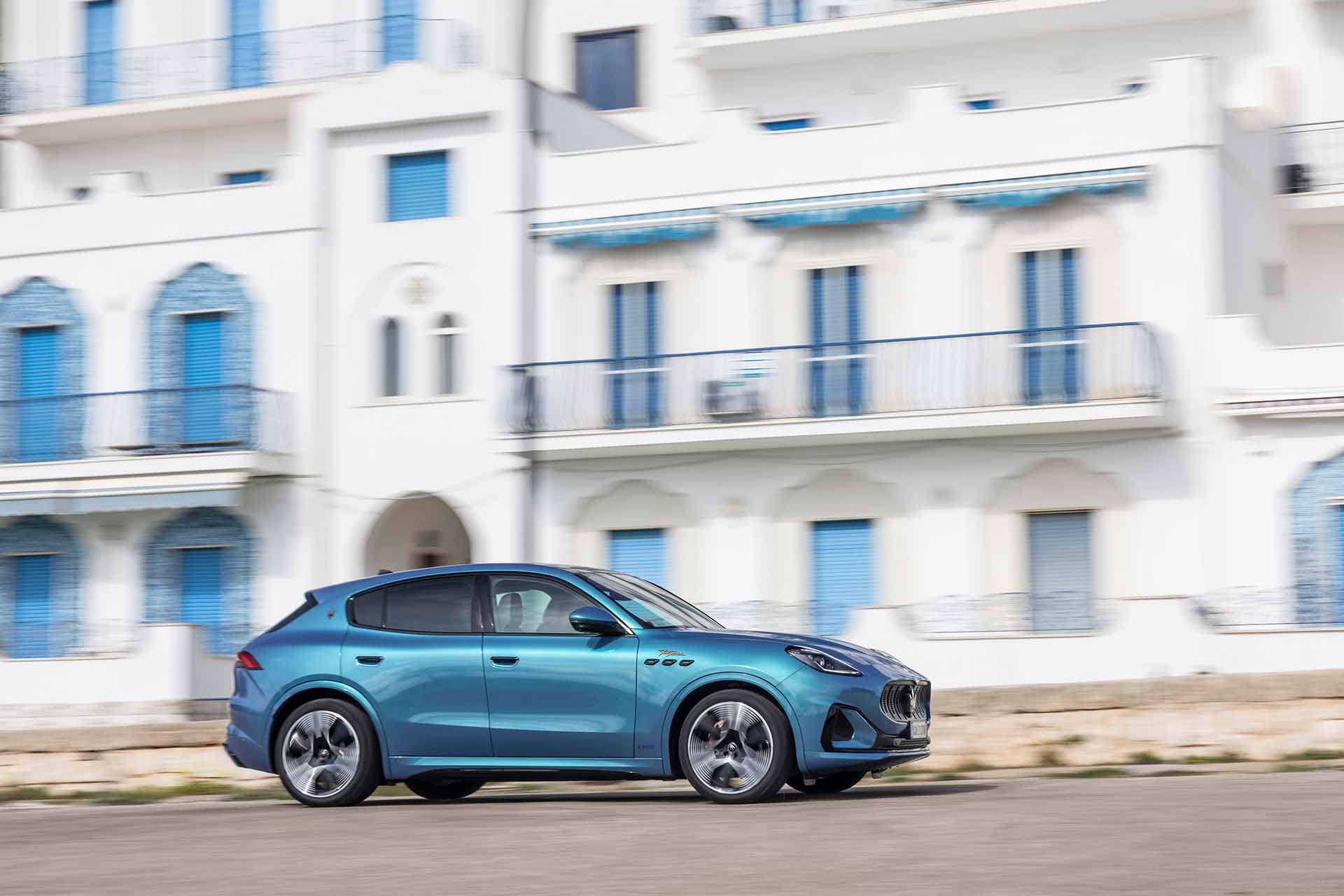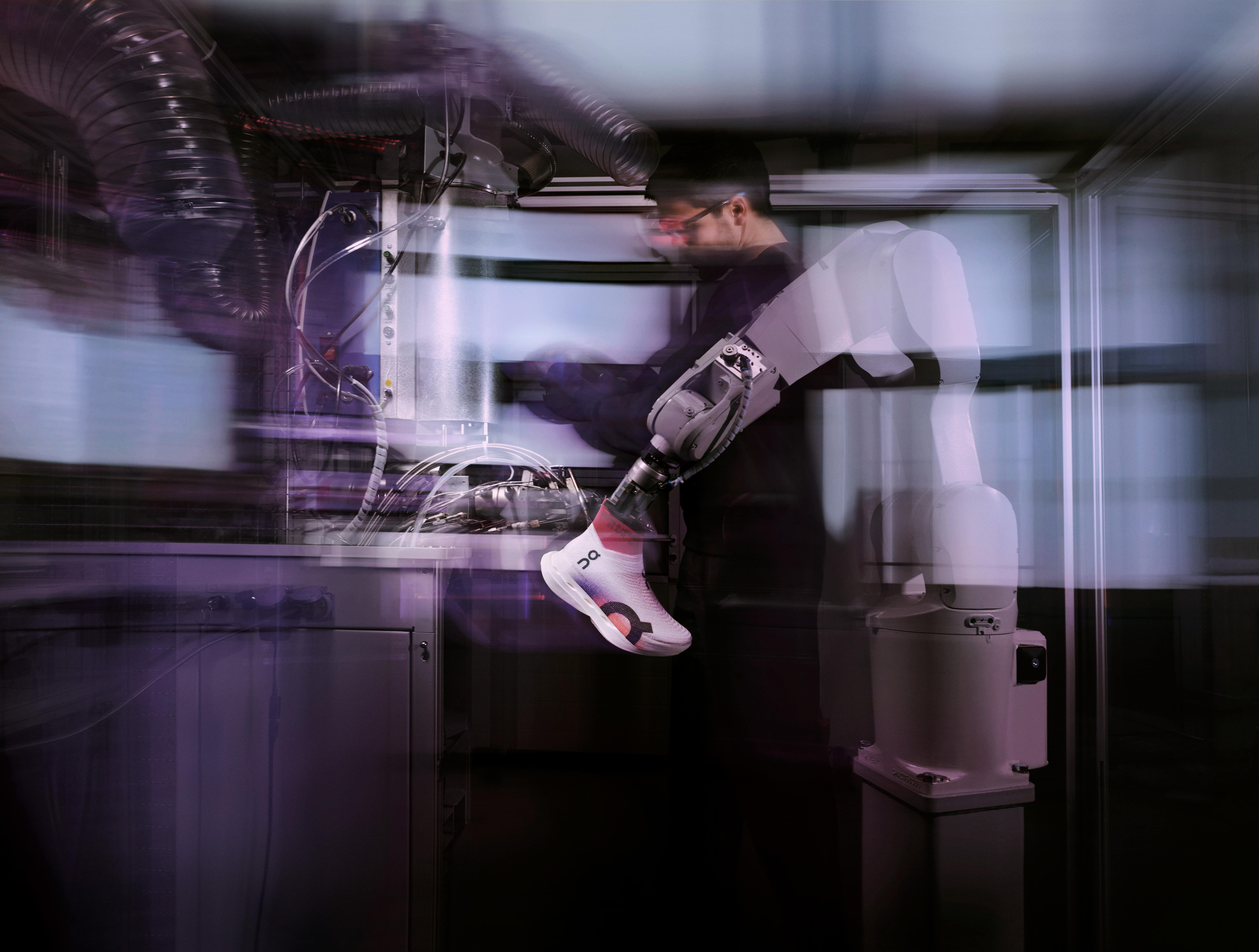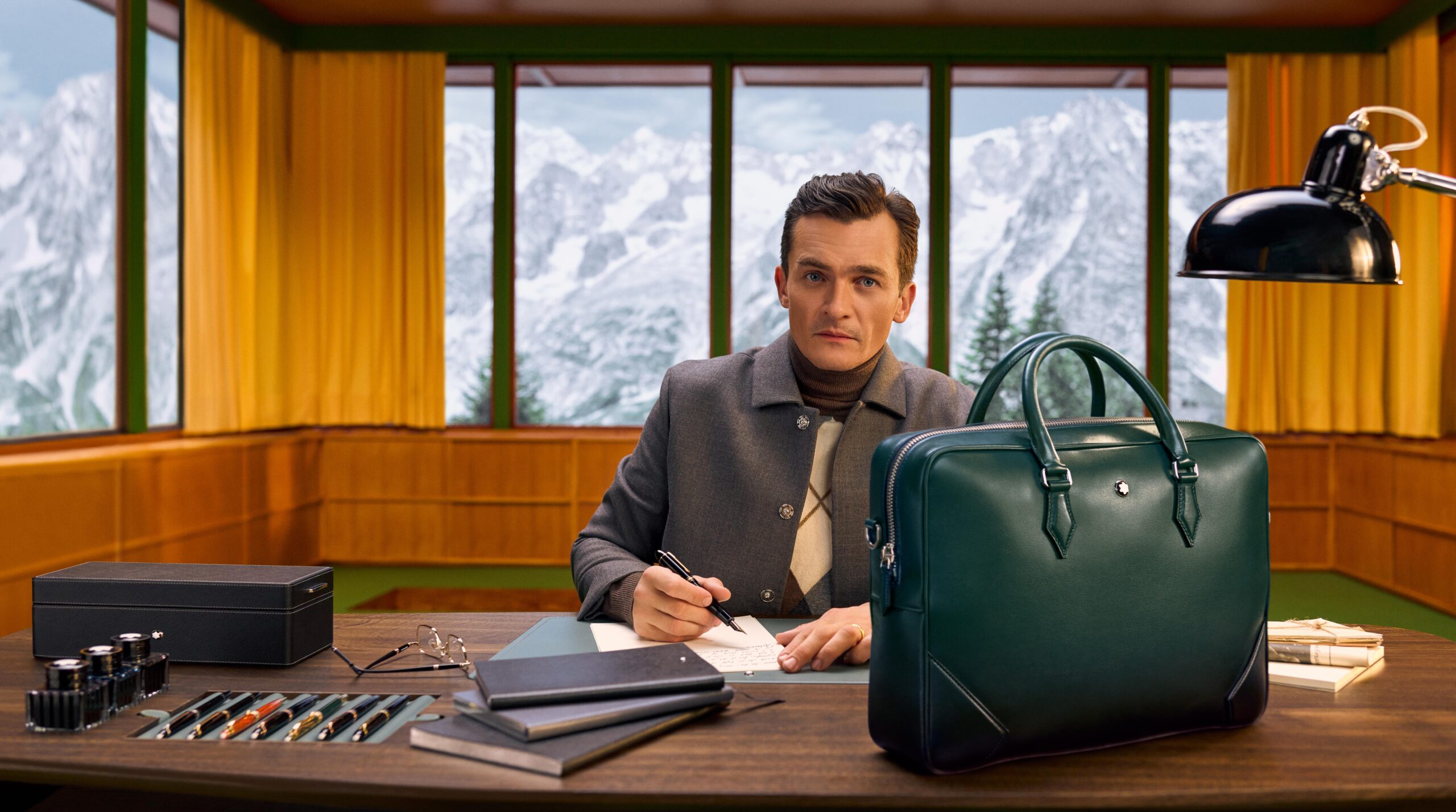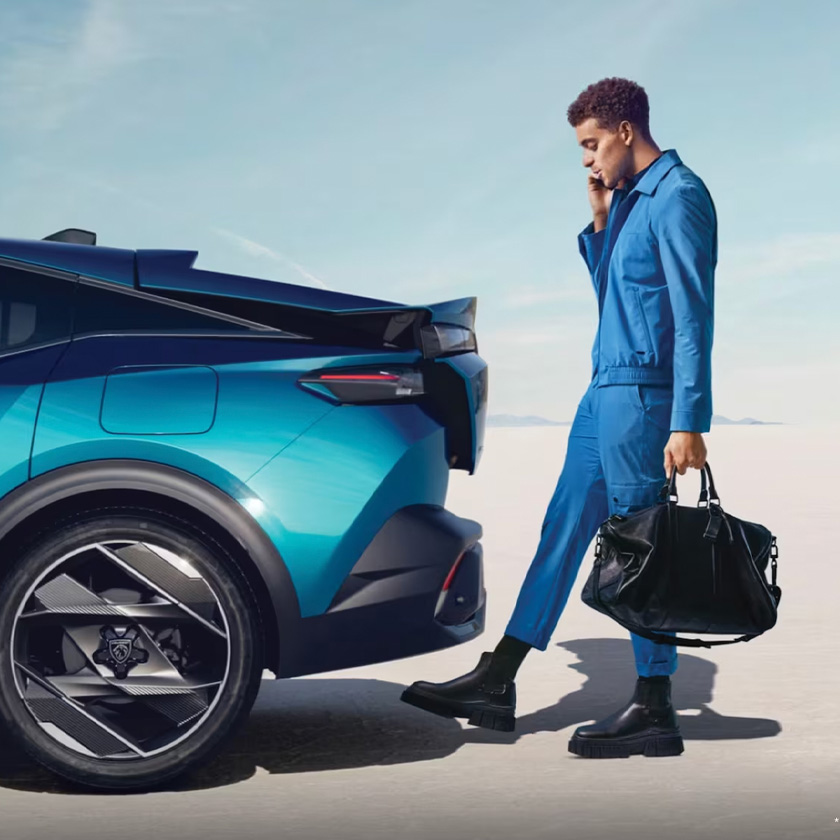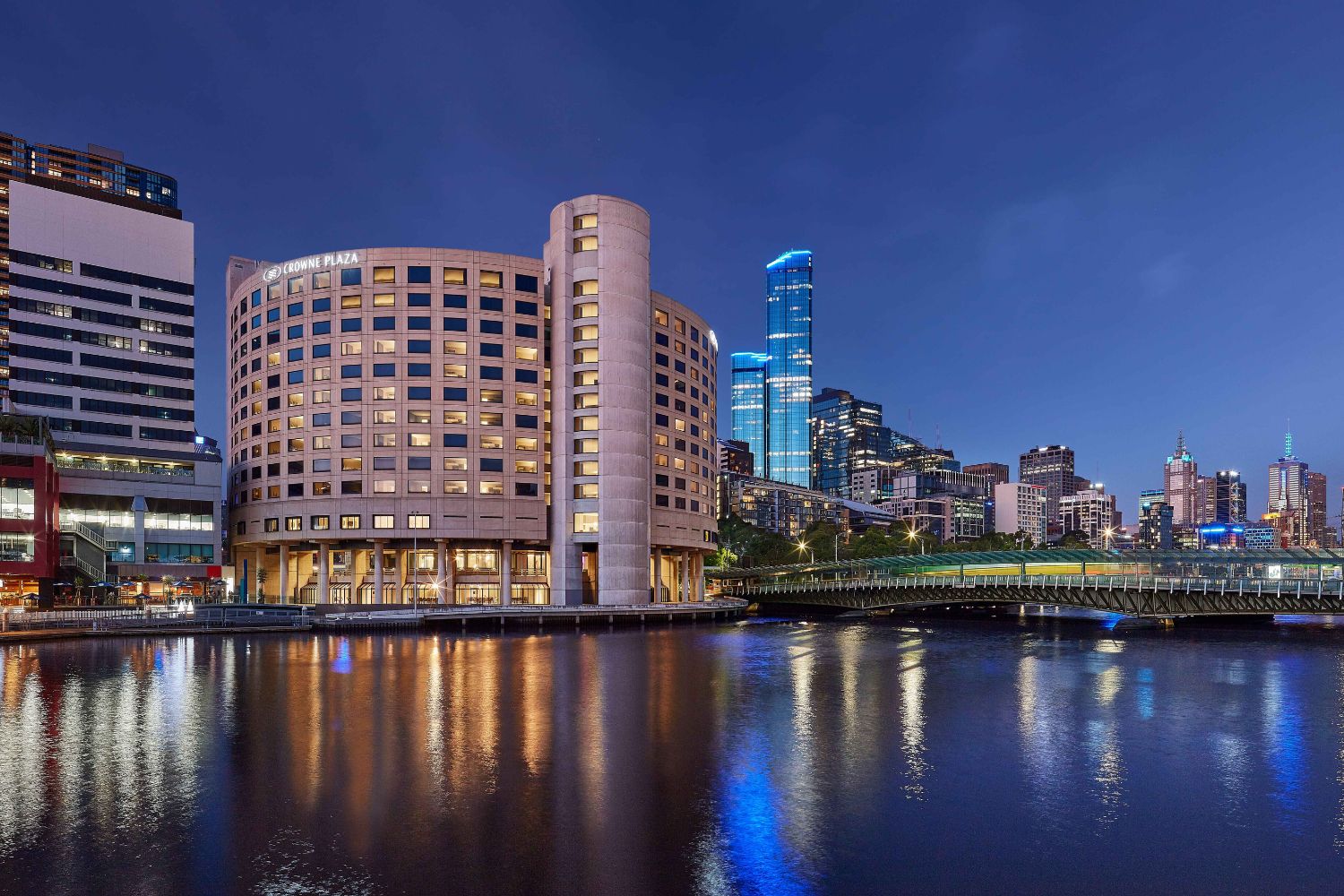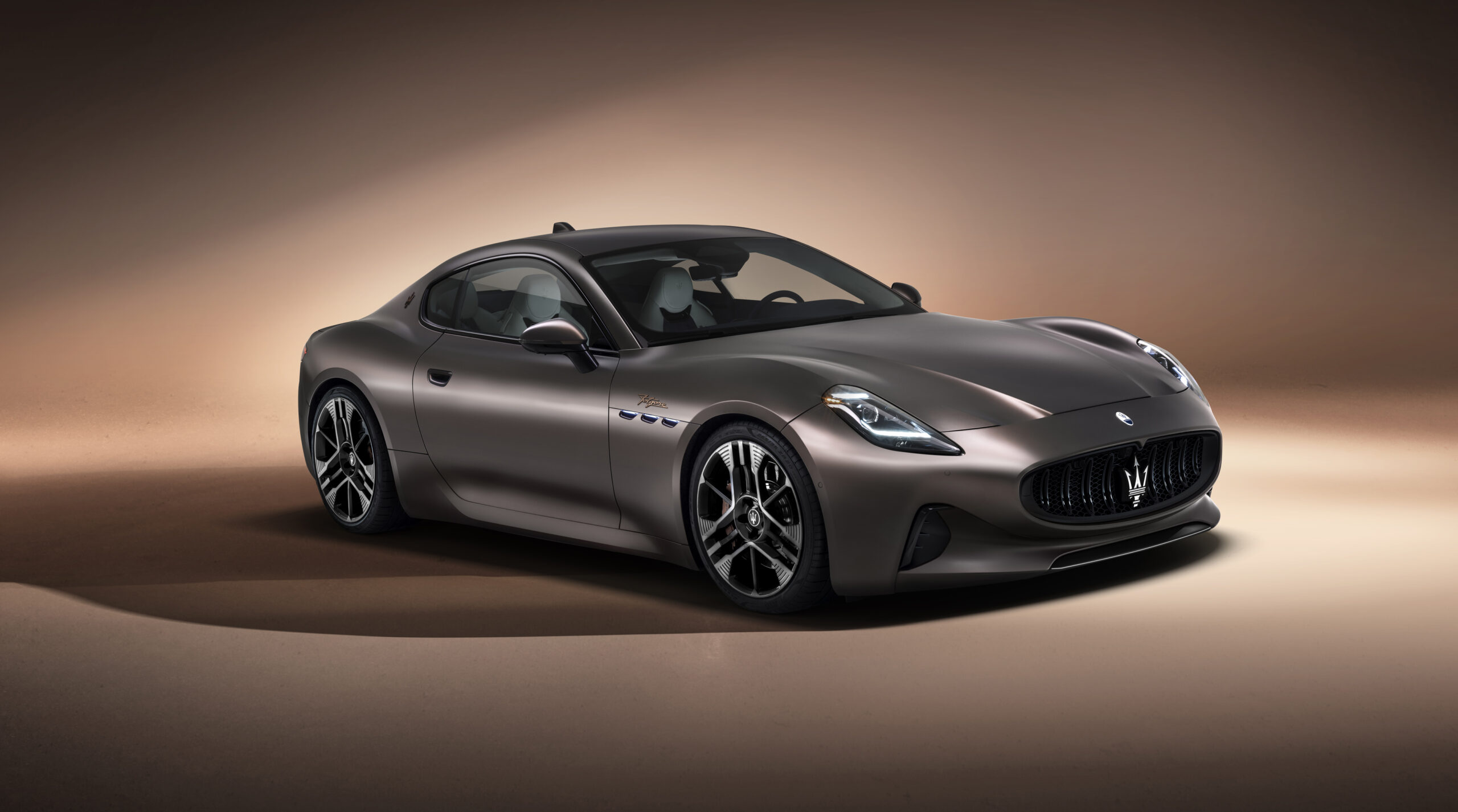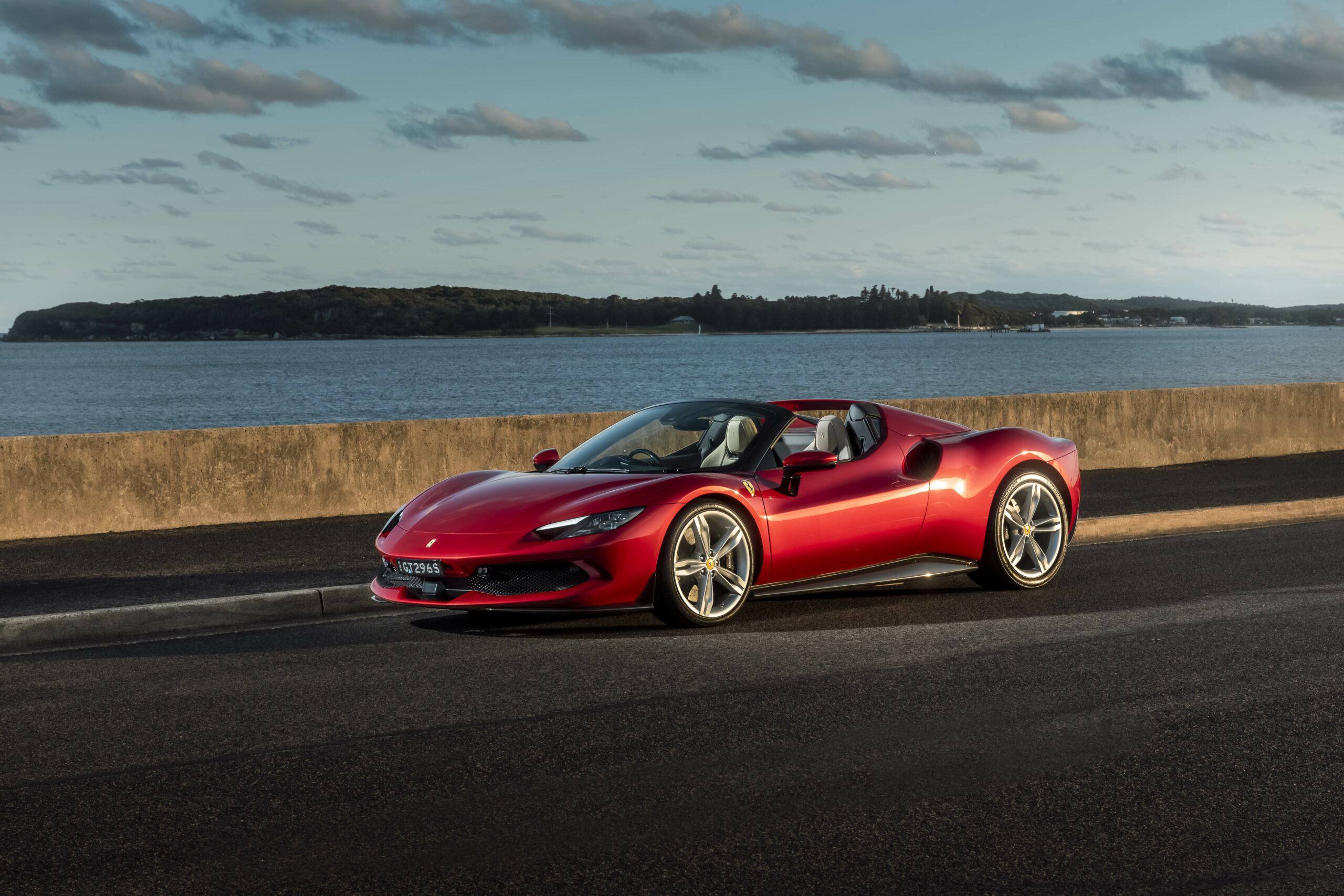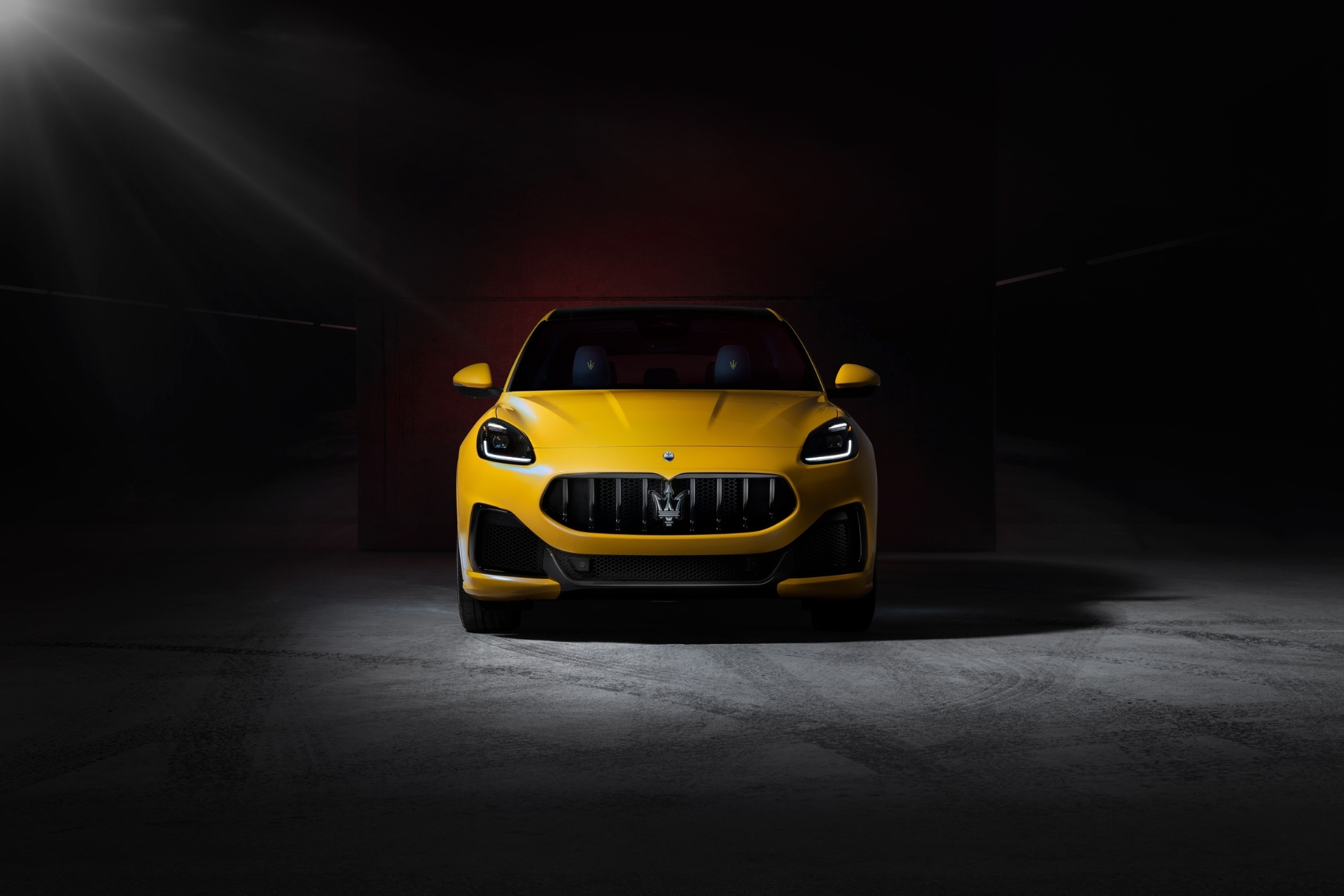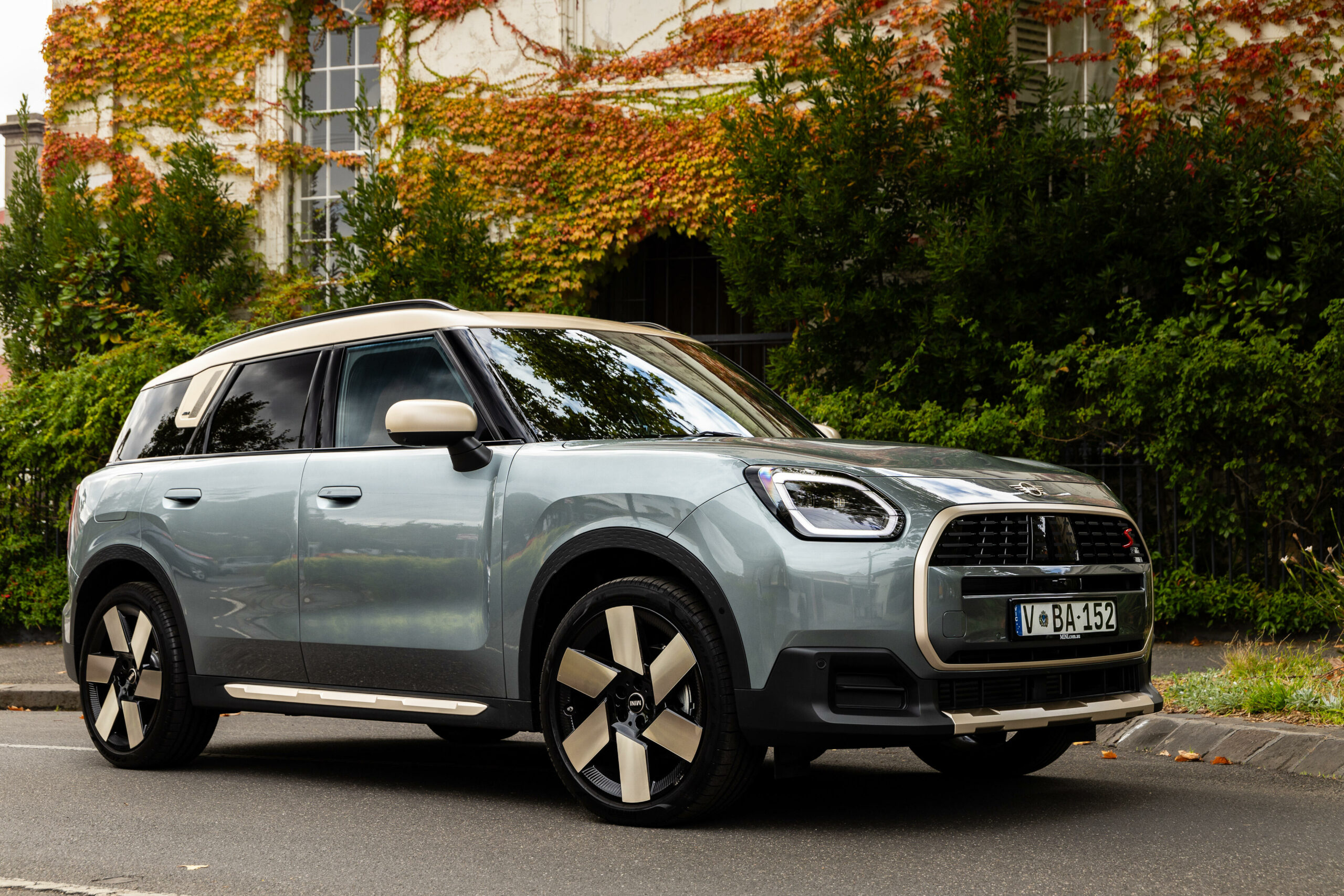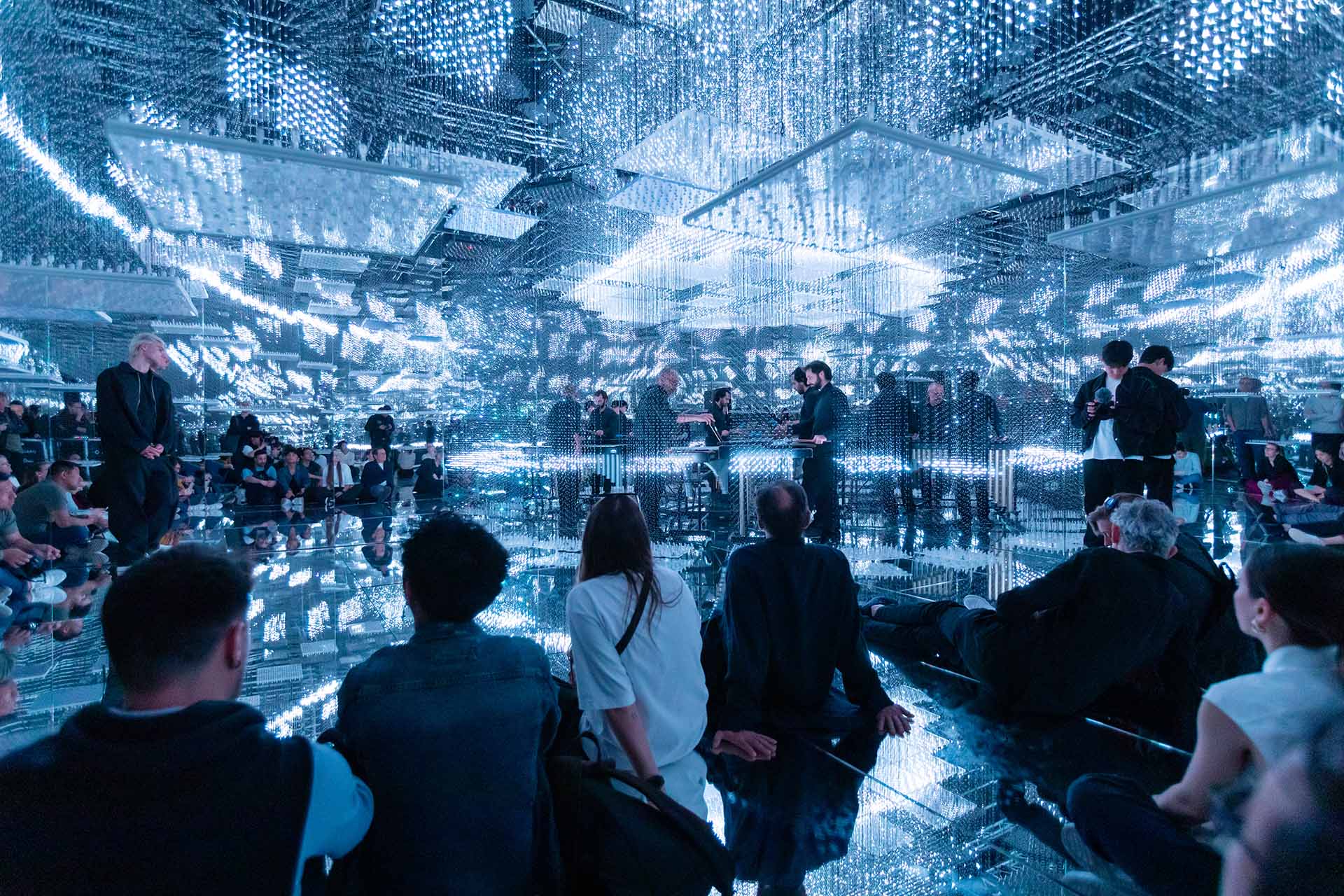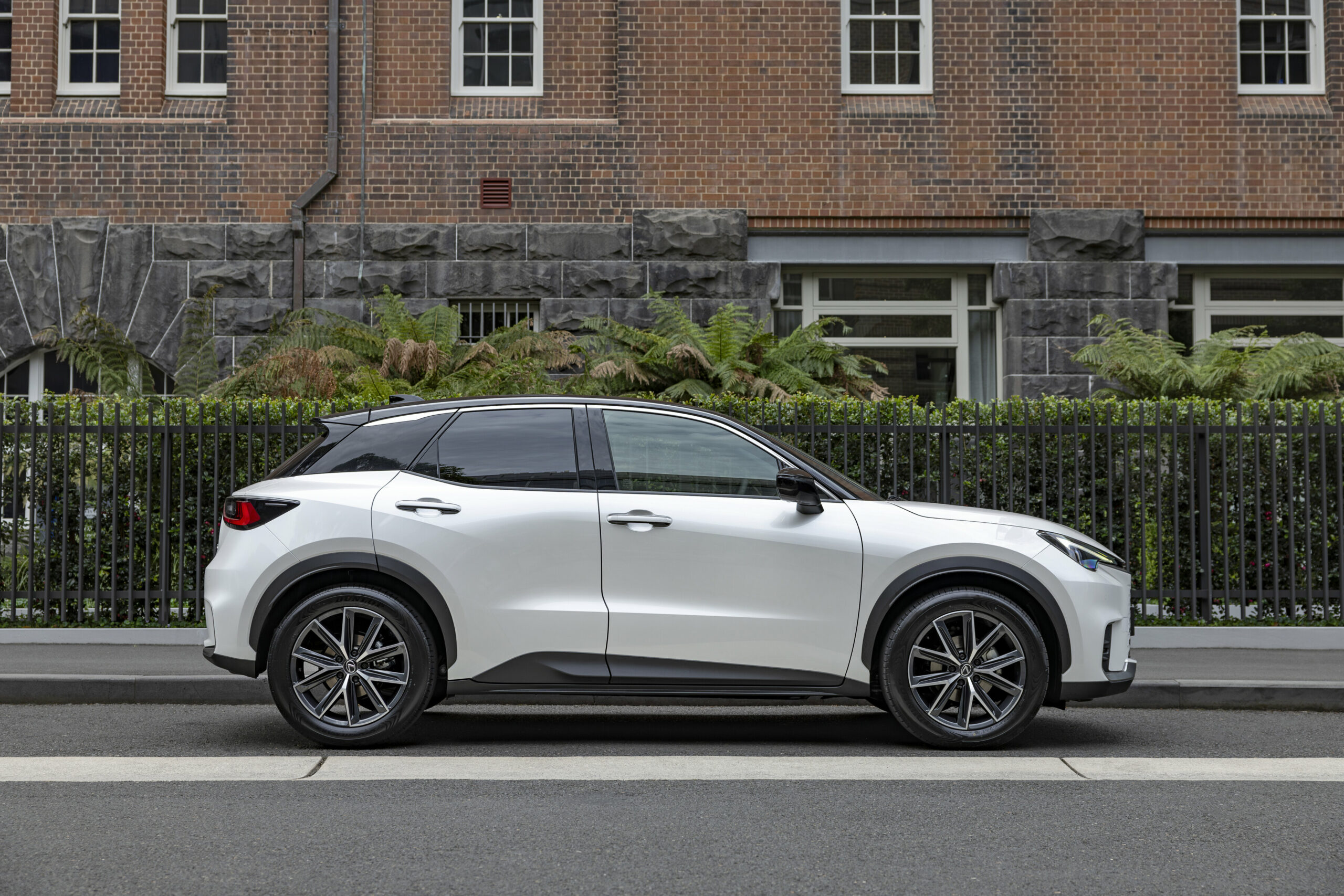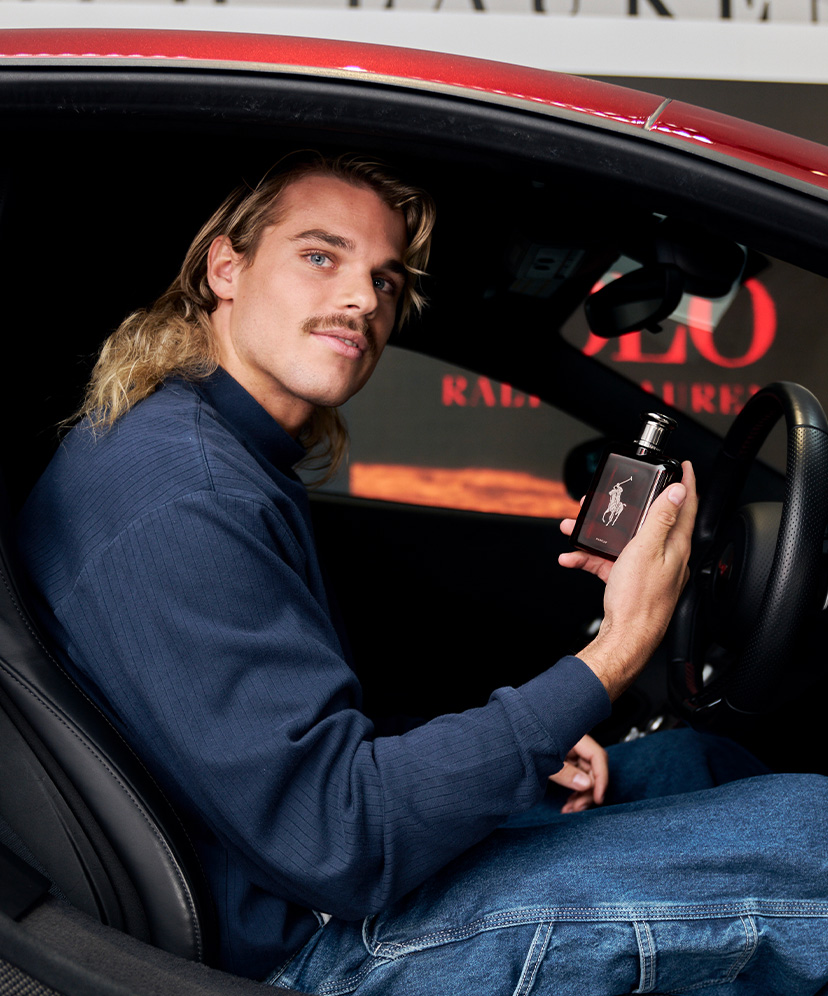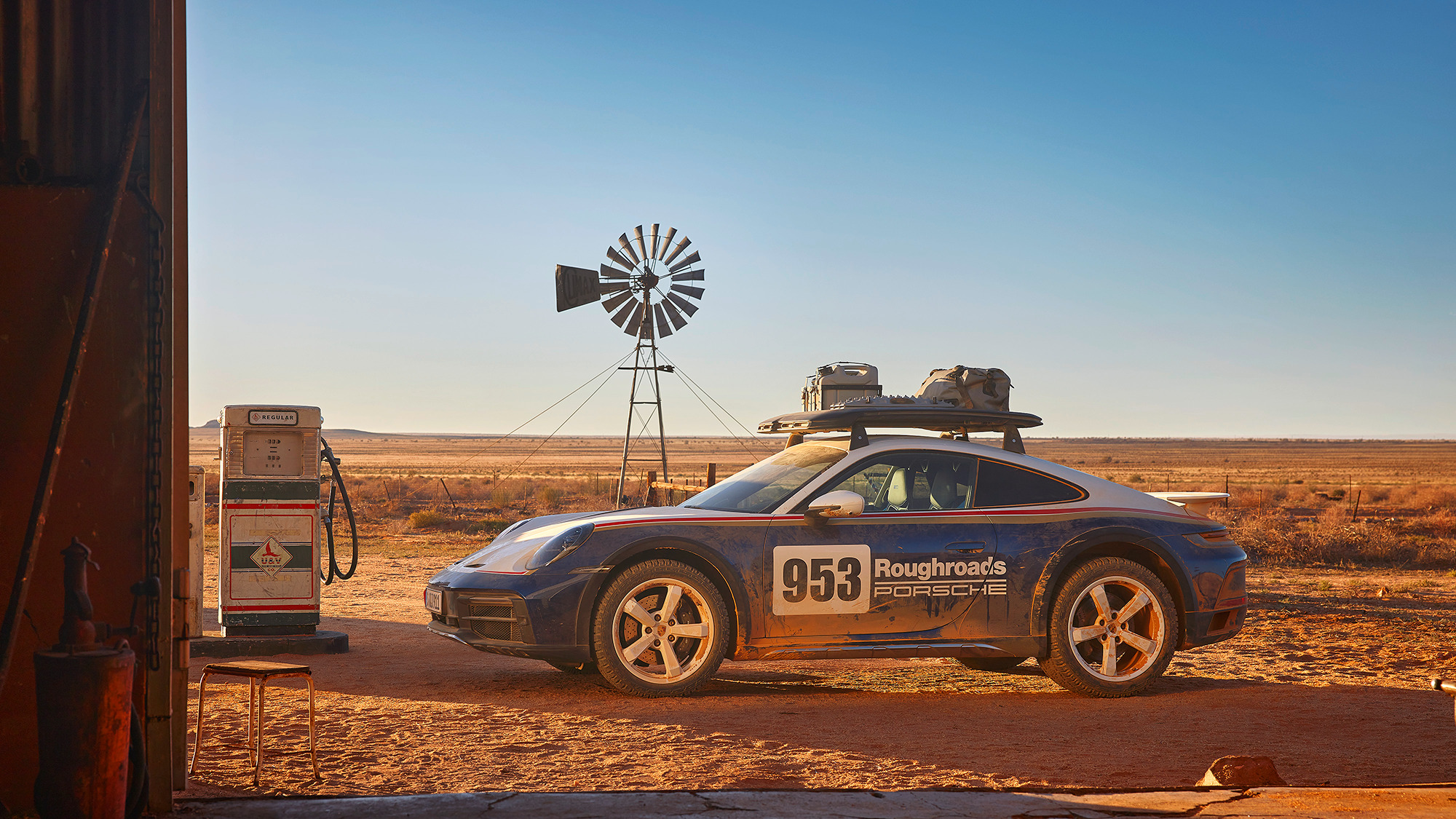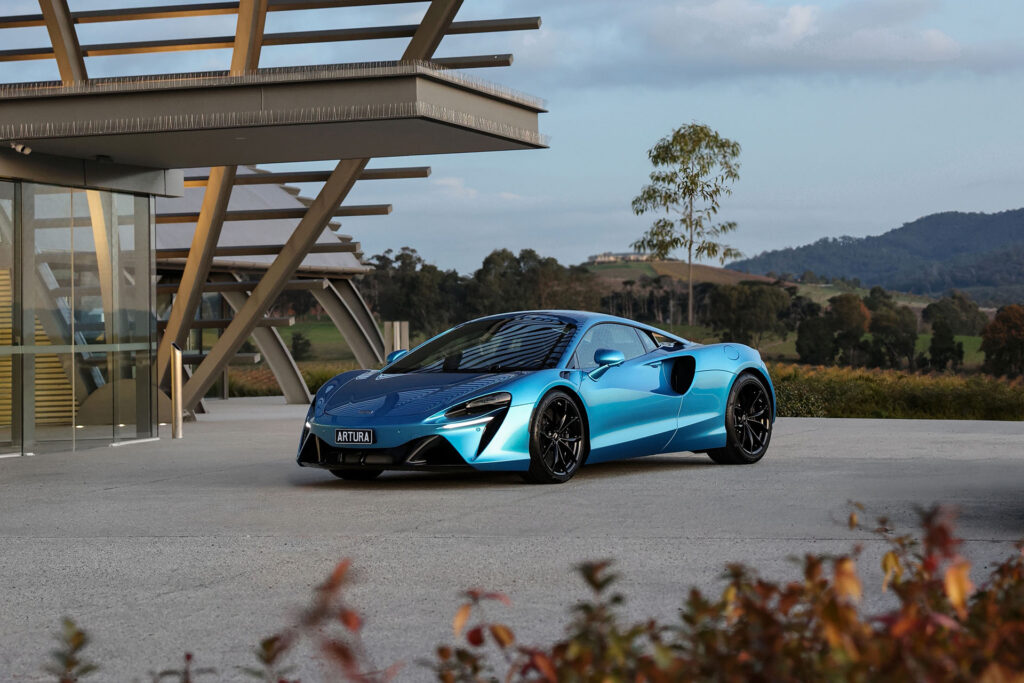
WHEN YOU ROAD TRIP with the sole intention to experience the connection between human, environment and machine — a level of consideration must come into play. Finding roads without traffic, that suit the purpose of the car and whatever it is you’re looking to feel might not be the most conventional or easiest way of travelling, but it’s a level of planning that pays off. That’s why we’ve started this series; consider it your cheat sheet to the best roads of the world, each with micro itineraries that can be explored within a day. Not only that, we’ll suggest the ideal car for the journey.
In this case, it’s the McLaren Artura.
We’re lucky in Australia that these quiet roads exist, and can be found just a hop and a skip outside of our cities. The road trip is central to our culture and holds much nostalgia, yet sometimes it seems like the busier we get, the less we seek those roads less travelled. Nevertheless, when you’re in the Melbourne CBD and handed a set of keys to the magnificent McLaren Artura, the British supercar marque’s new agile petro-hybrid, touting a 500kW/720nNm, 3.0L twin-turbo-charged V6 and electric motor combo, the first thought that occurs is: how do I escape this traffic?
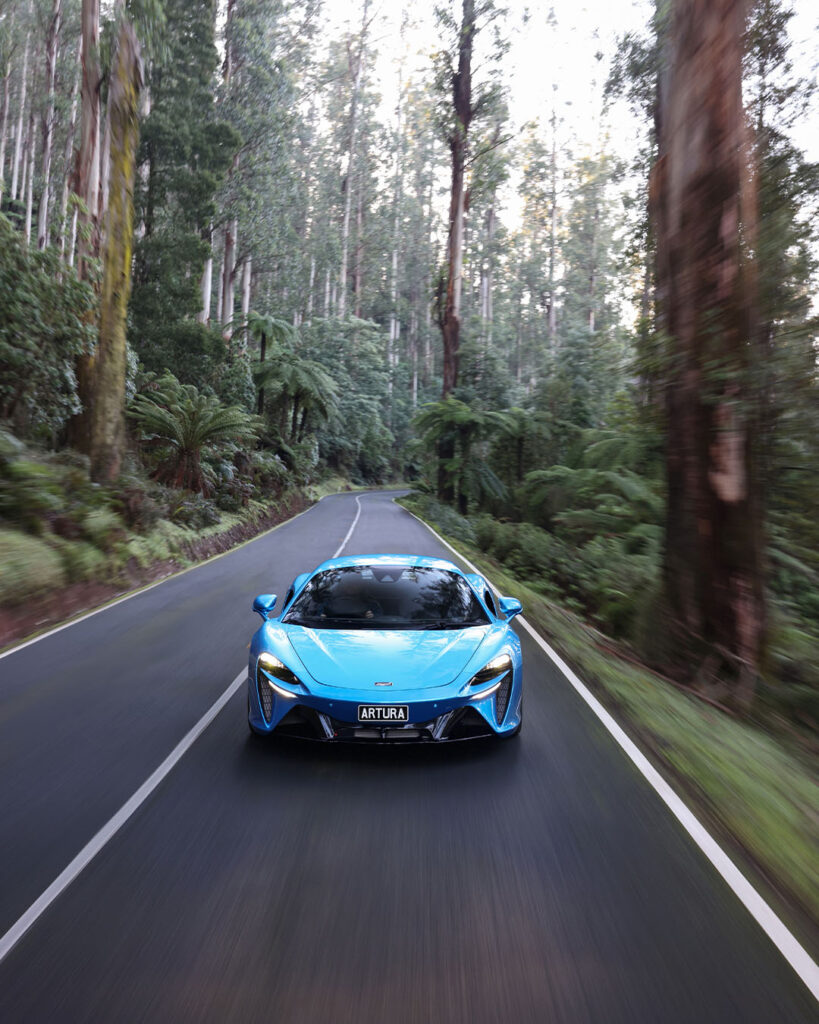
Lean, lightweight and minimal, Artura is a masterclass in design for purpose. Being a McLaren, it’s also designed for driving precision. Shaped for aerodynamic and athletic performance, from the rear corner, its curves appear like they’ve been sculpted by the wind itself. It is a supercar that bridges a new era with the old. Artura is quieter than most, clean in its styling (no huge wing or gauche front splitter), but magnificent in the way it connects the driver to the road — as can be said for most McLarens.
It is the kind of car that calls for a drive that speaks to design, storytelling and intention. So, we chose a journey with undulating roads that traverse one of Victoria’s most beautiful forests, as well as architecture that, like our McLaren, is designed for purpose.
As we speed away from the city, we’re reminded of the patterns that exist between urban life and the natural environment. Our Artura, a masterful piece of technology, feels at home among the tall gums and the smooth black asphalt of Black Spur Drive. Of course, you don’t need a supercar in your possession to enjoy the route we’ve carved out here — though it does come highly recommended. The point is, that beauty, inspiration and escape can be found close to home, and exploring by road is one of the best ways to see what lies just outside.
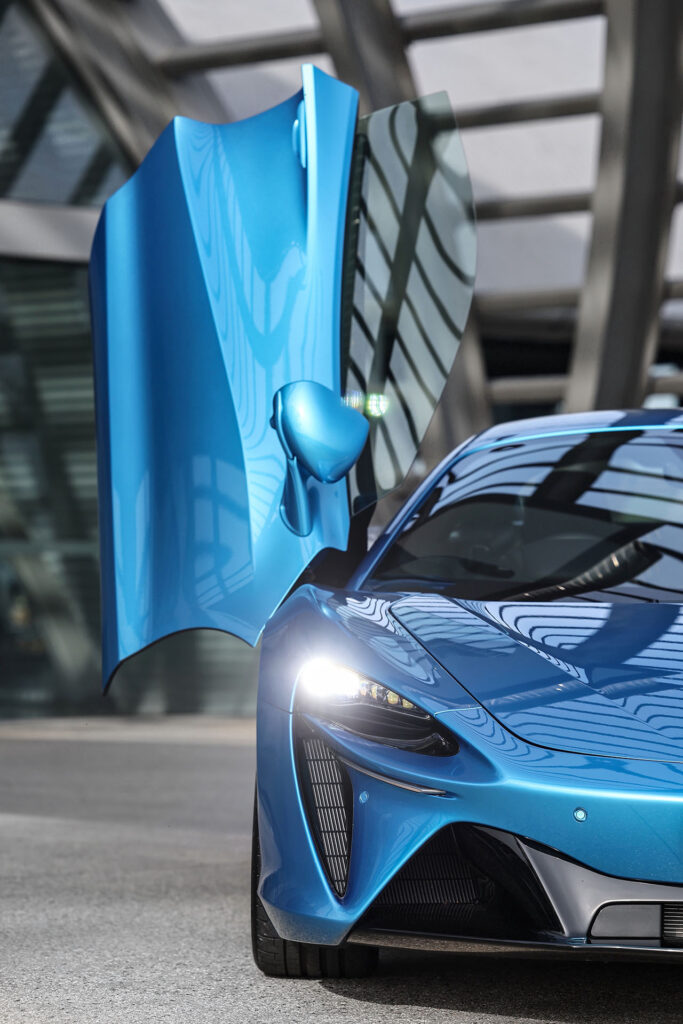
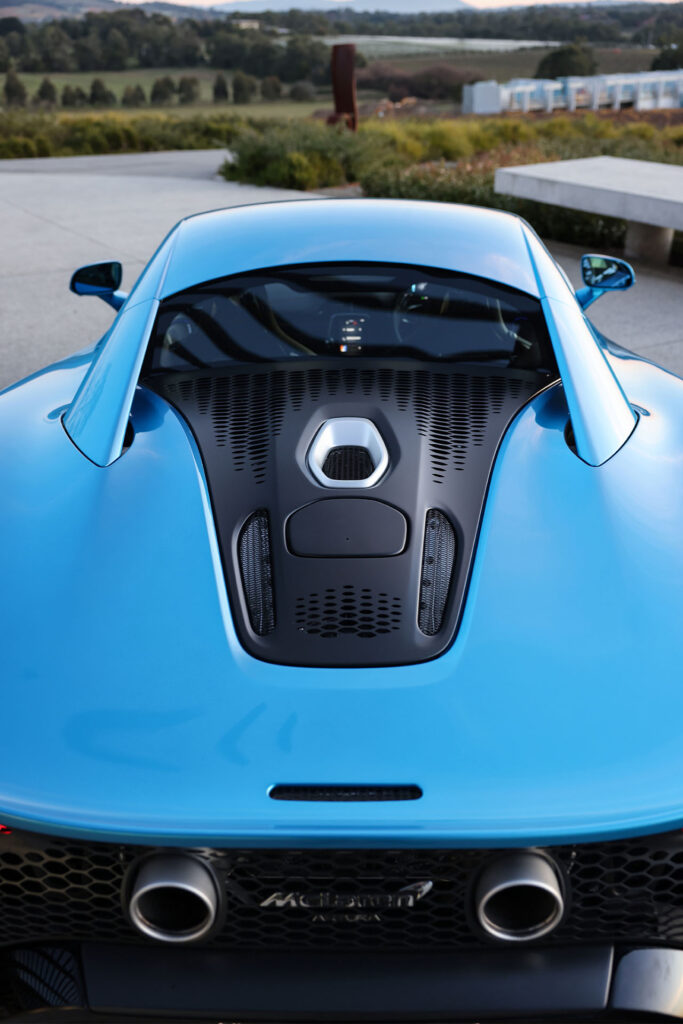
The road: Black Spur Drive
Black Spur Drive is one of the many lush forest-lined and dynamic roads in Victoria, but unlike some of the state’s other famous drives — like the iconic Great Ocean Road — you won’t be battling tour buses and rental vehicles for a nice, spirited run of twists and turns. Slicing through the tall forest of the Yarra Ranges, on ancient Wurundjeri land, this near-30km stretch of road brags stunning valley views and speckled filtered light, with many a curve and burst of soft straights, this majestic road is a driver’s dream. It even smells of freedom, as when the windows are down, the fresh fragrance of the Australian forest promises to fill the cabin.
It is the perfect road to explore in an Artura. One of the lightest supercars in its class — its brand new Spider (convertible) form is actually the lightest — it’s easy and joyful to drive. While its 0-100km/h dash of 3.0 seconds is impressive, it feels truly connected to the blacktop, helped by McLaren’s signature precision steering feel, ergonomics and bright, open glasshouse, which offers incredible visibility — something we’re eternally grateful for when navigating these twisty roads. The hybrid system, powered by a 7.4kWh lithium-ion battery, offers around 31kms of pure silent electric driving range; up to 130km/h is a lovely little party trick when you want to arrive, depart or drive in silence. Today, a little switch to EV mode offers a pure feeling of being at one with the road, the environment and the driving experience. It’s a plug-in, but in a similar way to how the hybrid systems work in Formula 1, the engine is capable of charging the battery itself — and ironically, the more you push the car, the more power it recoups.
There are two ways to get to the Black Spur from central Melbourne. The long and scenic route circles Fernshaw, and takes you past the Rainforest Gallery in Warbuton and scenic viewing point Archeron Gap in Fernshaw. From here you make your way up to Narbethong, where you’ll turn onto Black Spur Drive and head down to Healesville (about 2.5 hours). For a shorter sprint up and down Black Spur Drive, punch Narbethong into your map, and you’ll have two clear runs there and back down Black Spur Drive (around 1 hour and 45 minutes direct to Narbethong).
For those who thought ahead to pack a flask and some snacks, around halfway down is Dom Dom Saddle Picnic Ground, which is surrounded by tall gum trees and subtropical ferns, and looks like the setting of a Tom Roberts painting — especially when the mist hangs low.
The culture hit: TarraWarra Museum of Art
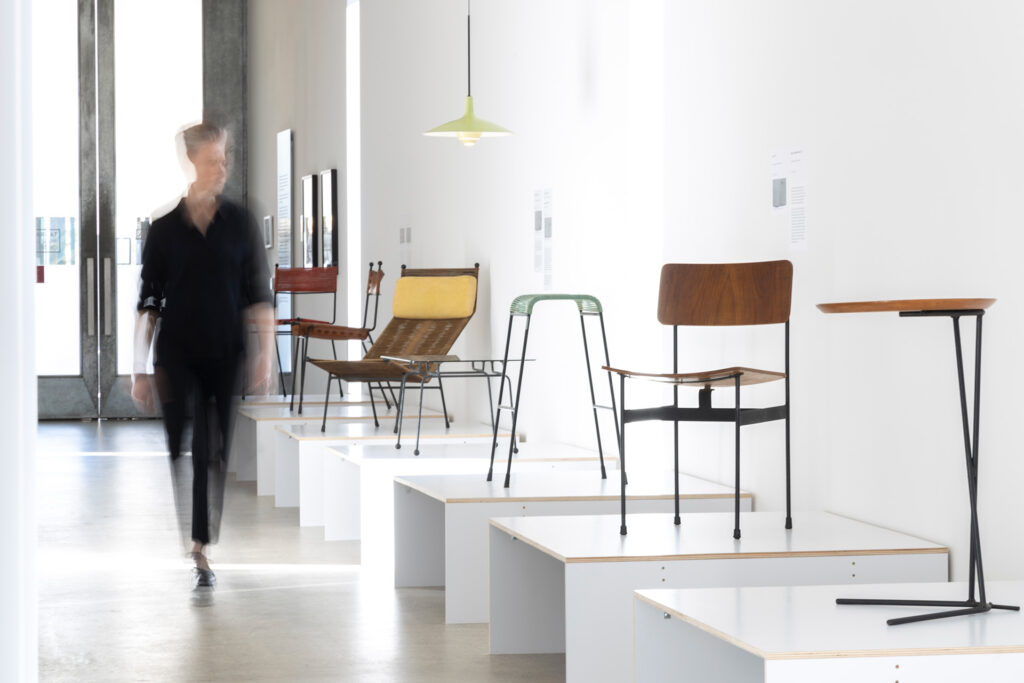
Just outside the quaint village of Healesville is one of the Yarra Valley’s worst-kept secrets: the TarraWarra Museum of Art. Since its opening in 2003, this privately funded gallery has been a beacon of culture hidden between the region’s grapevines. The gallery itself is nothing short of remarkable; housed in an elegant, award-winning architectural building, it’s home to a range of rotating exhibitions that highlight the connection between contemporary art and modernism, through a lens that also traverses global and Indigenous contexts. The museum, which opened in 2003, was founded by philanthropist and collectors Marc and Eva Besen, who had been collecting art since the 1950s. TarraWarra’s permanent collection features an array of curiosities, each exploring stories around place and ideas. Works by iconic artists from Richard Bell, Yvonne Audette, Emily Kame Kngwarreye, Daniel Mellor, Jeffery Smart, Brett Whitley and more feature.
The building itself is also a modern jewel. When the light shines at just the right angle, it fills the gallery, showing off small details as envisioned by architect Allan Powell. Outside, expect sweeping views across the nearby mountains and rainforests. Situated on a green hill that overlooks the valley, TarraWarra is a must-do for anyone travelling through the Valley, particularly as an offering for a moment of reflection and gratitude between the fast-paced sprints of our valley jaunt.
Back in the car, we find ourselves thinking about the artful cues found throughout the Artura. This is the first McLaren designed and built from a total clean sheet in over ten years, so a lot of consideration has gone into its creation and architecture. The economics are splendid: the shape of the seats, the way the occupants are cosseted inside by the newly innovated carbon-fibre and aluminium monocoque (a historic McLaren signature that revolutionised Formula 1 way back in 1981) and the way the new central infotainment system is angled just slightly towards the driver. Even the climate control system is guided by a little racing driver graphic so you can direct air where you want it (helmet, steering arms, lower racing suit). Plus, the sensory element that comes from the trills and breaths of the car’s pumps and technical adjustments is a delight. That’s if you don’t choose to flex the 11-speaker Bowers & Wilkins system, which we absolutely recommend.
The lunch spot: Levantine Hill Estate Winery
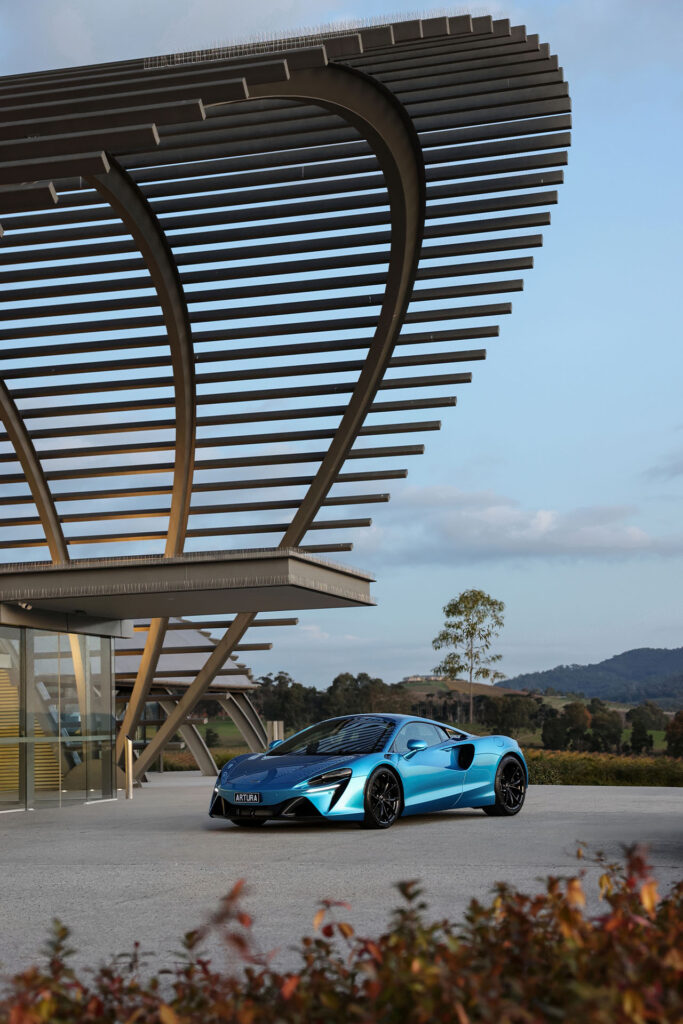
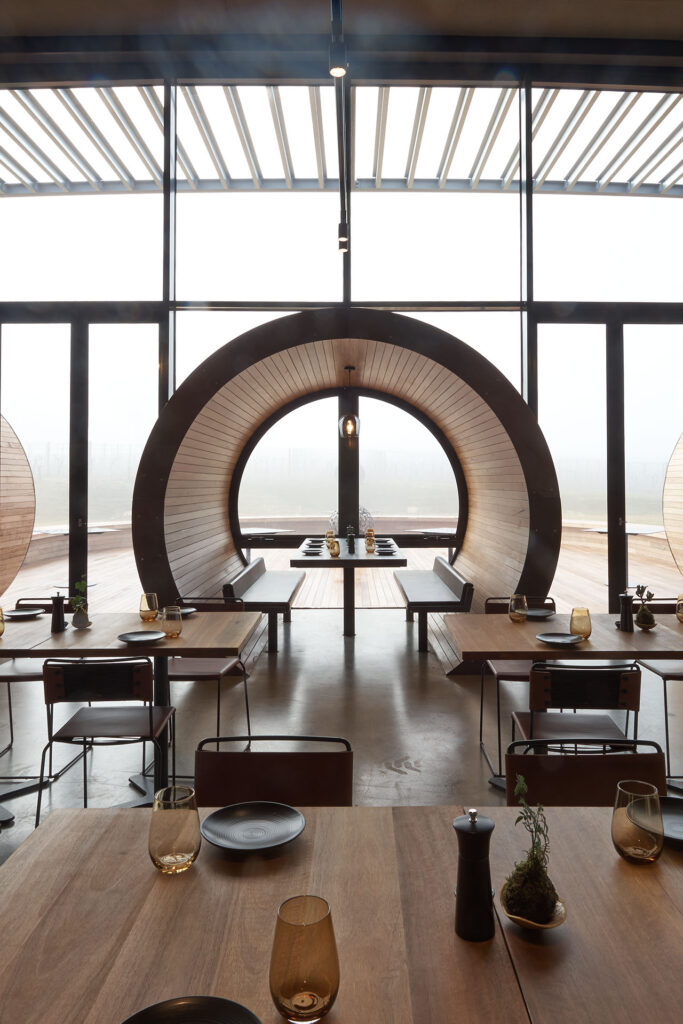
Levantine Hill Estate is the final stop of our itinerary, and while being behind the wheel is the highlight of this trip, if you’re riding shotgun and are free to taste and savour the vineyard’s award-winning wines, this is your time to shine. Located around 20 minutes away from TarraWarra Art Gallery, this is a place rooted in the pursuit of perfection, from the wines to the artfully presented Mediterranean-inspired cuisine served in the restaurant, to the building designed by Karl Fender of Sydney architectural firm Fender Katsalidis.
Levantine Hill is both a celebration of process as much as it is a testament to what happens when audacity pays off in the best ways possible — in this case, for Australian property tycoon, philanthropist and art collector Elias Jreissati, who wanted to build a vineyard of dreams to rival that of some of Australia’s greats. Not only would the wine be excellent without compromise, but the destination itself — which is in the process of adding a hotel — would become a landmark stop. While here, note how the buildings evoke the shapes of barrels and mountains, and how they sit there in a lovely rural ambience that isn’t trying to be anything but an evolved part of the Earth.
“Great design seeks excellence, and excellence comes in a number of ways,” says Fender when we meet.
As a rural building constructed at a grand scale, Fender points out how the functioning vineyard has been carefully designed so that any machinery — such as exhaust vents and the like — is celebrated. “It becomes part of the architecture. So it looks like it’s a machine, which it is,” he says.
At this point, we’re tempted to draw parallels to how Artura incorporates engineering into its design. Aerodynamics are part of the Artura sculptural frame — the nose splits the air, the shape of its headlamps, the small louvres above the front wheels and, as a functional and clever nod to the brand’s logo, the arrow-shaped side panel that rises towards the rear haunches. On top of its tail, which though subtle, still manages to create 50kg of downforce for stability, you’ll notice two large vents. The V6 engine sits under here at 120 degrees and the turbos are in the same V-shape. These vents allow heat to escape up and out, rather than traditional means of being directed out the rear. Finally, throughout the cabin, the bones of the monocoque are celebrated as design signatures, as a reminder of the advanced technology that underpins the machine and protects the occupants.
Then, Fender puts a topical question to us: “What is the purpose of the car?” His answer is particularly profound: “I would say, to create something with incredible beauty. When you look at it, you go to water a little bit. When you drive it, it becomes this unbelievable experience of sound, feel, texture of the road, comfort, safety — all of those things [means] it becomes part of your body and part of your physical experience. So it works in two different ways.” He adds: “It works as an object that someone sees roaring down the road, and it pulls them over, you know, with surprise and delight.”
As we return our Artura to the city, Fender’s words seem to hang in the air. A road trip full of surprise and delight in a car that really roars down the road.
Related:







